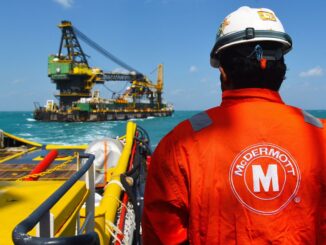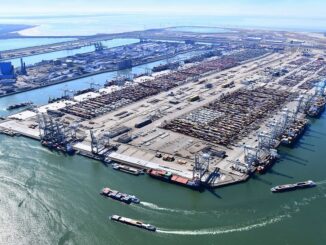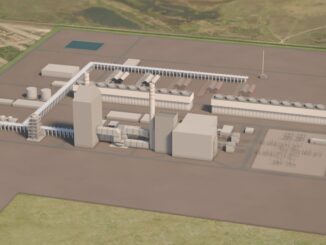
Home Fossil Energy With over 140 carbon capture, utilisation, and storage hubs in development, 2022 pushes CCUS to new heights
While the global energy crisis marked 2022, efforts to propel the energy transition forward in a bid to usher in a sustainable energy future continued gaining momentum. As a result, last year was also a bumper year for carbon capture, utilisation, and storage (CCUS), according to the International Energy Agency (IEA), as more than 140 new projects were announced, ramping up planned storage capacity by 80 per cent, and capture capacity by 30 per cent.
Illustration; Source: International Energy Agency (IEA)
Based on the IEA’s data, CCUS projects were announced in seven additional countries, in central and southern Europe, the Middle East, and Southeast Asia, bringing the total number of countries with plans to develop CCUS to 45.
With around 15 final investment decisions taken across applications in industry, power, fuel transformation and direct air capture since the beginning of 2022 – up from eight in 2021 – this signals an increasing confidence in the industry, driven in part by CCUS-specific policy incentives in the United States, Canada, and the United Kingdom; by strengthened climate pledges; and by rising carbon prices in compliance and voluntary carbon markets.
The International Energy Agency’s Mathilde Fajardy, Energy Analyst; Carl Greenfield, Energy Analyst in the Carbon Capture Utilisation and Storage Technology Unit; and Rachael Moore, Former Energy Analyst, outline in their insights from last week that the most significant growth along the CCUS value chain is observed in the development of CO2 transport and storage infrastructure, particularly in North America, Europe, China, the Middle East, and Australia.
The IEA’s data shows that over 210 Mt of new CO2 dedicated storage capacity was announced in 2022, up from 100 Mt CO2 in 2021, and 70 Mt CO2 in 2020. In addition, similar capacities for connecting infrastructure, including collection terminals, pipelines and shipping, also entered into planning, thus, planned storage capacity currently outweighs planned capture capacity by 2030, but “a continued and sustained push” is needed to ensure enough storage sites are developed and capacity is available to meet mid-century climate targets, underline the three analysts.
Since governments and companies have recognized that reaping benefits of deploying CCUS to meet decarbonisation goals hinges on the timely roll-out of CO2 management infrastructure, countries around the world have committed over $6 billion in the development of CO2 transport and storage infrastructure since 2021, including in the United States, the European Union, and Australia. Regarding recent project developments, an important milestone was announced this month when CO2 captured in Belgium was transported to Denmark for injection in a depleted oil field in the North Sea.
While most CCUS projects to date have operated on the same business model, as full-chain projects where CO2 is transported from one capture facility to one injection site, typically involving a single operator, such projects suffer from high investment, cross-chain risks and liabilities born by a single developer.
Therefore, Fajardy, Greenfield, and Moore point out that breaking up the CCUS value chain can help mitigate these hurdles as CCUS scales up, as seen with part-chain projects focused on capture, transport or dedicated storage developing in connection to emerging shared infrastructure within CCUS hubs.
The IEA’s data shows that over 140 CCUS hubs are in development, more than three times as many as in 2021. Oil and gas companies have been spearheading CCUS development, operating five of the eight dedicated CO2 storage projects in operation and most of the existing CO2 pipelines with ExxonMobil, Occidental, Petrobras, and Chevron being involved in over half of the current operational capture capacity.
Alongside oil and gas companies, new specialised players are emerging as the CCUS value chain is being broken into its constituent components, such as gas infrastructure developers who are increasingly involved in building and operating CO2 pipelines as part of their portfolio, sometimes retrofitting existing gas assets.
Moreover, liquefied natural gas (LNG) carriers and shipping companies are expanding into CO2 shipping while chemical companies have leveraged their technical know-how to develop proprietary capture technologies, both to reduce emissions from their own facilities and to provide capture solutions to third parties. Additionally, engineering companies have also developed proprietary capture solutions, with modular capture skids for third-party emitters.
New companies specialising in one part of the chain, such as Carbon Clean, Svante, ION clean energy, and Entropy Inc. are also emerging with proprietary capture solutions offering capture-as-a-service to emitters, either as developers, owners and operators of the unit or through technology licensing. In line with this, companies such as Storegga, Summit Carbon Solutions and Horisont Energi are also developing CO2 transport and storage infrastructure solutions.
The International Energy Agency believes that the development of CCUS hubs can send a positive signal to operators of emitting facilities seeking to reduce their emissions by indicating that if they invest in CO2 capture, the required CO2 management infrastructure will be available. In the United Kingdom, the number of capture projects in development has more than tripled since 2020 while the Northern Lights transport and storage project in Norway is pondering a third expansion phase to meet the demand from emitters.
The IEA’s Fajardy, Greenfield, and Moore claim that policies should proactively leverage opportunities and tackle challenges that may arise from new CCUS business models to ensure that policymakers can keep up with an evolving CO2 management sector and support the growth required to meet decarbonisation goals.
As governments have a key role in network planning, coordinating hub development, and accelerating lead times for storage permitting, CCUS hubs can involve higher counterparty risks related to the cancellation, unavailability or failure of part of the chain.
Furthermore, the IEA emphasizes a need to develop comprehensive legal and regulatory frameworks with considerations specific to CCUS hubs, including third-party access to storage, multi-modal transboundary transport and regulatory obligations under the London Protocol, as emerging frameworks and existing regulations should be fit for purpose.
To illustrate this, Fajardy, Greenfield, and Moore mention the European TEN-E regulation on energy networks, which was revised in 2022, “but still does not fully support all modes of CO2 transport.”
The IEA’s three analysts conclude that international collaboration is “instrumental” in exporting these models to other regions exploring CCUS, such as Southeast Asia and the Middle East, as first-of-a-kind hubs are firing up in Europe and North America.
With fossil fuel subsidies being seen as roadblocks in the transition to clean energy sources, a recent analysis from the International Energy Agency shows fossil fuel consumption subsidies rose to a record of over $1 trillion in 2022, as governments acted to limit the impacts of the energy crisis on consumers and energy bills.
To tackle this, the IEA outlined a new price gap-plus approach that could bring carbon prices and environmental costs into the equation. Based on the IEA’s findings, getting price signals right is “essential for clean energy transitions,” creating incentives to use polluting fuels efficiently, to switch to cleaner ones, and to invest in efficient and low-emissions technologies.





